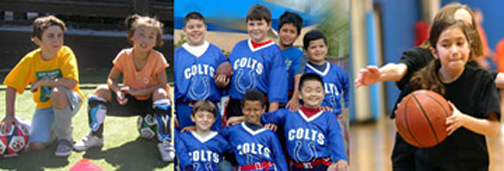Better Food Choices and Simple Game Play Helps Kids Lead More Active, Healthy Lives
The top three warning signs that American children are in danger of becoming overweight or obese can be boiled down to three basic questions:
- Is my child engaged in sedentary after school activities such as watching television, texting, playing electronic games, and communicating with friends on a computer through social networks such as instant messaging, MySpace, and Facebook?
- Are my child’s preferred food and drink choices found in packaged boxes, snack bags and soda cans often advertised on television?
- Is my child getting less than 30 minutes of continuous aerobic exercise each day?
Well, if your answer is yes to one or more of these questions it might be time for a change because the first 18 years of a child’s life sets the stage for future health and fitness.
According to statistics from the Centers for Disease Control and Prevention (CDC) about 16 percent of all children and teens in the United States are overweight. They are at risk for a host of health issues including heart disease, high blood pressure, type 2 diabetes and some forms of cancer. Factor in the social and emotional stigma that unfit kids face at schools by bullying based on body size.
Other hidden factors that can lead to childhood obesity include exposure to commercial advertising for unhealthful food choices targeted at children’s television programming. According to an analysis by the Center for Science in the Public Interest (CSPI), “nearly 80 percent of food ads on the popular children’s network Nickelodeon are for foods of poor nutritional quality.” Combine that with the fact that a recent study has found that, if left unchecked, 43 percent of Americans will be obese by 2018, the dangers are clear. No matter how you look at it, childhood obesity is a problem that leads to bigger health issues in later life.
However, one expert believes the secret to preventing your child from becoming part of that alarming statistic is to offer healthy food choices, and start playing fun and easy 10 minute activities to promote fitness and coordination as early as birth. As your child grows, so should the various games and challenges to stimulate brain and body development.
“Kids who start ahead by being active, stay ahead to become the high academic and athletic performers in schools and in sports,” said Karen Ronney, author of Proud Parents Guide to Raising Athletic, Balanced, and Coordinated Kids from Thomas Nelson Publishing (www.karenronney.com). “Parents and caregivers can make all the difference by playing movement games with their children a few minutes each day. This promotes the idea that exercise is fun while forming a healthy habit of being active.”
Ronney suggests the prime time to start game play is during infancy, toddlerhood and the preschool years. Then increase physical challenges in the school age and teen years by adding more technical fundamental sports skills.
Here are the top 3 tips for giving your child the right start:
- Stimulate your baby’s eyes and hands to teach fine motor skills and visual tracking such as reaching for and grasping objects. Dangle a safe and colorful toy about 12 inches away from your child and guide his or her hand to hold it. Repeat and move the toy right, left, above the head, and in various directions.
- Promote brain cell growth and body balance in your toddler and preschooler through large motor movement while walking, hopping, skipping, rolling, running and two-footed jumping in simple at-home games. Design an easy backyard obstacle course that involves all of these actions. Make it a race to the finish.
- Develop core strength, eye-hand and eye-foot sports skills in your adventurous kindergartener and school age child such as kicking, catching and hitting large balls, bubbles and balloons. Advance to smaller standard balls, bats, rackets, hoops, jump ropes and flying discs. Play games that use both hands and feet for balanced development.
“Let your child be your guide on how quickly he or she becomes skilled in game play and body movement,” said Ronney, whose program lists over 200 activities using basic household supplies. “Always allow for success and gradually increase the challenge. The goal is to have fun and raise happy, balanced and coordinated kids who are physically, mentally and emotionally ready to excel in athletics, academics, music, art and other interests.”
They key, Ronney said, is starting early.

